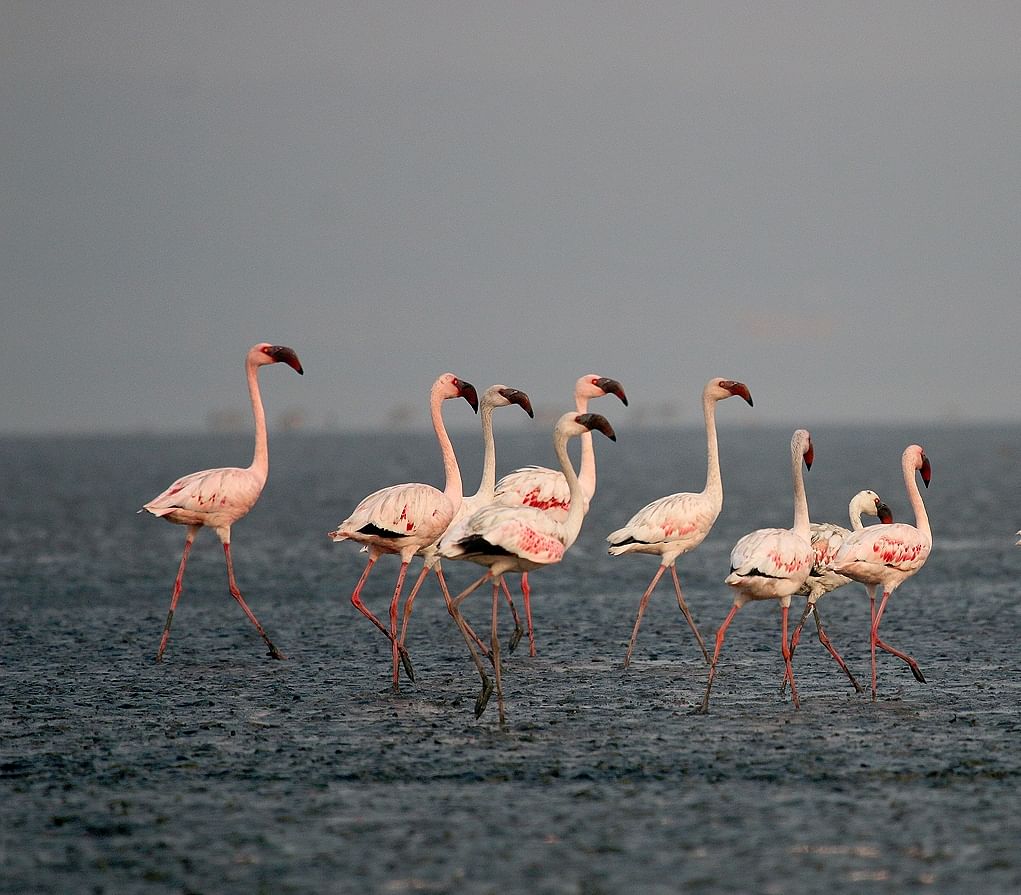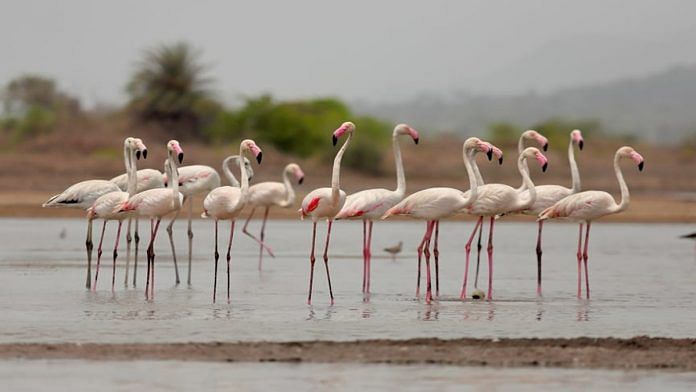Mumbai: The Mumbai Metropolitan Region (MMR) is witnessing a “bloom of pink” as a record number of flamingos have been spotted at the Thane Creek this year.
Over 1.33 lakh flamingos have been observed across the Thane Creek Flamingo Sanctuary, Sewri, and adjacent areas this year until May. This is the highest number of the migratory birds ever spotted in the region, according to Rahul Khot, deputy director at the Bombay Natural history Society (BNHS), a pan-India wildlife research organisation.
With more than 75,000 Lesser Flamingos and 50,000 of their greater cousins, there is a bloom of pink in Thane Creek Flamingo Sanctuary. Here is a visual treat from Navi Mumbai. @MangroveForest @MahaForest @NaviMumbaiCity #Mumbai pic.twitter.com/OMSVnT7PSR
— Bombay Natural History Society (@BNHSIndia) May 12, 2022
Last year, this number stood at only a few hundreds. “This is a sharp increase since previous years and especially last year (2020-21), when the greater flamingo abundance was the lowest (324-569) across all three regions (Thane, Sewri and Uran) and less than 2 per cent of the population was recorded in the preceding two years,’’ read a joint statement issued by the Maharashtra forest department, the Mangrove Foundation, a registered society operating under the department’s mangrove cell, and the BNHS.
Of six species of flamingos found across the world, two can be spotted in India — the greater flamingo and the lesser flamingo.

The BNHS started monitoring and recording the number of flamingos coming into the MMR region in 2018. In 1994, the forest department counted 8,000 greater flamingos in the region, according to the research body.
Khot told ThePrint that it is difficult to pinpoint the reason why flamingos have come in record numbers this year, but urbanisation does have something to do with it.
“The number of flamingos has been changing since the last two decades. Historically, they were less in number because habitat was not suitable. But due to rapid urbanisation and the growth of mangroves, habitat became suitable,” he added.
Also Read: Peace on Pakistan border boosts J&K’s Gharana Wetland, 15 new migratory bird species show up
How pollution plays a role
Flamingos flock to the MMR region between November and May. For them, wetlands are an ideal feeding ground. Therefore, Thane Creek, Sewri and Uran are some of the areas the migratory birds flock to during their visit.
“Most of these flamingos come from Gujarat, but some of them could even be coming from as far as Iran, Africa. Greater flamingos prefer freshwater and estuary environments, which Mumbai offers in plenty thanks to its creeks and inland wetlands. Also, the sort of food they might be getting here may make this ecosystem more appealing to them. These birds are filter feeders mainly feeding on algae and small crustaceans which are responsible for their pink colouration,’’ said Khot.
According to Debi Goenka, executive trustee at the Conservation Action Trust, a non-governmental organisation, the conditions at Thane Creek are favourable for flamingos because of pollution.
“There is quite a bit of pollution at Thane Creek, which is conducive for microorganisms to grow. These birds feed on such microorganisms like blue green algae. Moreover, other wetlands and habitats are shrinking and that may be why flamingos are coming in large numbers to Thane Creek,” he told ThePrint.
The BNHS has tagged six flamingos with radio transmitters to study the birds and find out where they go, where they breed and how they travel. “Next year, we will be able to give out more details,” said Khot.
Excessive construction, destruction of mangroves a threat
The experts however warned that excessive construction and destruction of mangroves and wetlands could be a threat to these birds in the future.
In February this year, Chief Minister Uddhav Thackeray had cleared a proposal to designate the biodiversity-rich Thane Creek Flamingo Sanctuary as a ‘Ramsar site’, in accordance with the Ramsar Convention to the Centre.
Signed in 1971, the Ramsar Convention on Wetlands of International Importance Especially as Waterfowl Habitat is an international treaty for the conservation and sustainable use of wetlands.
(Edited by Gitanjali Das)
Also Read: Polly’s got a third leg! Parrots are tripods, use beak as extra ‘limb’ to climb, new study finds



